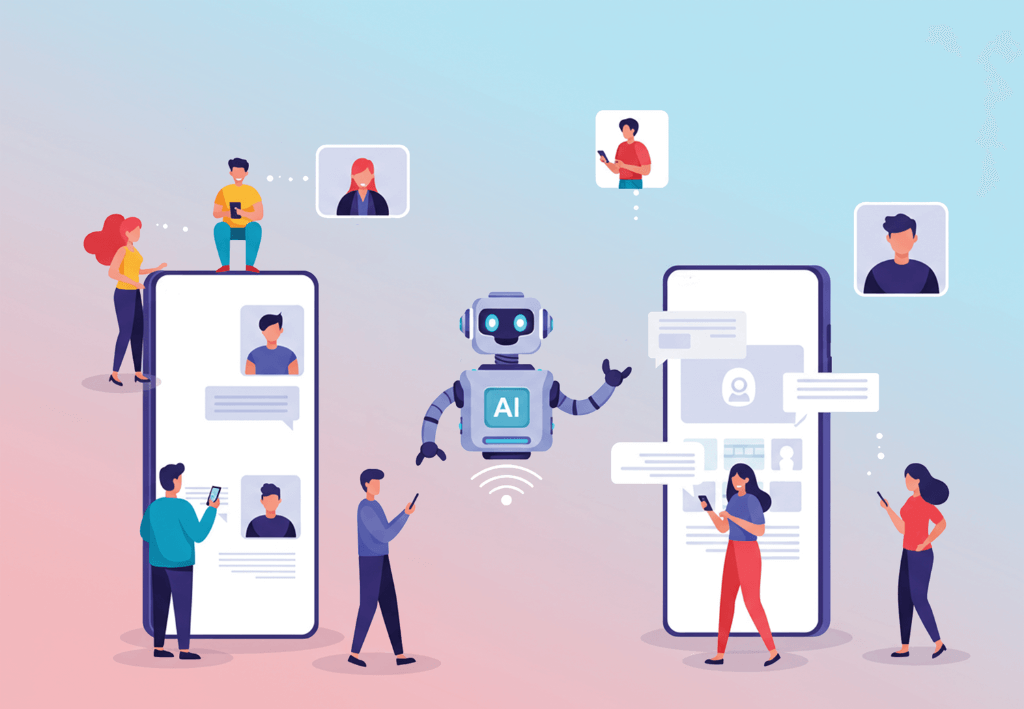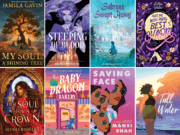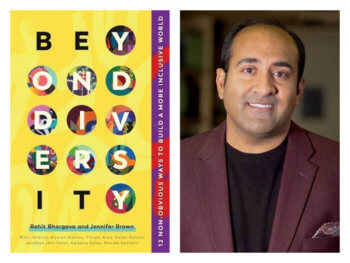
How Generative AI Is Assisting South Asians In Overcoming The English Barrier – One Prompt At A Time
Business Jul 14, 2025
For South Asian professionals facing language bias and accent discrimination, generative AI offers more than convenience, it’s a powerful tool for clarity, confidence, and career advancement.
For many South Asians, navigating the professional world means walking a linguistic tightrope. We often juggle the language of our heritage and family, the language of our education, and then there’s the language of ambition: the crisp, “professional” English demanded in boardrooms, interviews, and global communications.
If English wasn’t your first language, you likely understand the unspoken rule. You can be brilliant, experienced, and highly skilled, yet an invisible barrier, a quiet whisper, can persist: “Your English isn’t quite there.”
That sting is familiar. Despite a decade in marketing, leading growth strategies and generating millions in revenue, I’ve still second-guessed myself:
- Did that email sound polished enough?
- Is a misplaced comma undermining my big idea?
- Would a Canadian accent make them listen more closely?
Accent Discrimination Is Real, & It’s Costly
This isn’t just a personal feeling; it’s a systemic challenge. Studies highlight the real impact of language proficiency and accent on career progression for non-native English speakers, including South Asians. For instance, research by Statistics Canada on immigrants to Canada from 2015 to 2018 found that test-based measures of official language proficiency (listening, speaking, reading, and writing) had a significant positive effect on earnings, proving as important as pre-immigration Canadian work experience and more important than educational level in predicting initial earnings.
Beyond proficiency, accent discrimination is also a documented issue. A 2010 study by Gluszek & Dovidio found that speakers with non-native accents are frequently perceived as less intelligent, less competent, and of lower status. For South Asians specifically, studies have shown that those who report racial discrimination or have limited English proficiency are more likely to experience a lower quality of life, and in some cases, activity limitations.

A Canadian study also revealed that South Asian women, despite being highly educated, are often overlooked and underemployed, with 34% reporting unfair treatment in the workplace, nearly double the average for all women surveyed.
This is precisely why generative AI tools like ChatGPT feel like such a game-changer.
These platforms aren’t just about speed; they’re about liberation. They let you pour out your complex ideas without tripping over grammar fears. For those of us who are immigrants or non-native speakers, they’re a powerful way to refine our message so nothing gets lost in translation.
More Than Just ChatGPT: A Toolkit For Fluency
While ChatGPT is widely known, a growing suite of AI tools can significantly aid non-native English speakers:
- Grammarly: Beyond basic spellcheck, Grammarly offers advanced grammar, punctuation, style, and tone suggestions, making your writing more precise and impactful.
- QuillBot: This tool excels at paraphrasing, summarization, and rephrasing sentences, allowing you to express ideas in various ways and expand your vocabulary naturally.
- Jasper AI / Copy.ai: These are comprehensive AI writing assistants that can generate a wide range of content, from marketing copy to blog posts, helping to refine tone and structure for specific professional contexts.
- PaperGen: Specifically designed for academic writing, PaperGen helps users elaborate on ideas, provide supporting evidence, and improve overall coherence, particularly beneficial for complex technical or research papers.
Crafting Effective Prompts: Your AI Co-Pilot
To truly unlock the potential of these AI tools, mastering the art of prompt engineering is key. Think of it as a conversation with a highly intelligent, albeit literal, assistant. Here are some tips and tricks:
1. Be Specific and Clear: Vague prompts yield vague results. Instead of “Improve this email,” try “Rewrite this email to a client, making it more formal and persuasive, focusing on the new product features outlined below.”
2. Provide Context: Give the AI enough background information for it to understand the situation. For example, “I’m a marketing manager writing to the sales team. The goal of this email is to motivate them to use the new CRM system. Draft an email that is encouraging and highlights the benefits for them.”
3. Define the Persona and Tone: Tell the AI who you are and what voice you want to convey. “As a seasoned professional in finance, draft a concise and authoritative executive summary for a quarterly report.” Or, “Rewrite this paragraph in a more conversational and empathetic tone for a public announcement.”
4. Specify Format and Length: If you need a bulleted list, a short paragraph, or a detailed report, explicitly state it. “Summarize this article in five bullet points.” or “Write a 200-word LinkedIn post announcing our company’s recent achievement.”
5. Give Examples (If Possible): If you have a specific writing style you admire or want to emulate, provide a sample and ask the AI to write in a similar vein.
6. Iterate and Refine: Don’t expect perfection on the first try. If the output isn’t quite right, refine your prompt. Ask the AI to “Make it more concise,” “Expand on point number three,” or “Change the call to action.”
7. Identify Key Information: Highlight the essential details that must be included. For example – “Ensure the email includes the deadline of July 31st and the contact person, Sarah Lee.”
8. Ask for Explanations: If you’re unsure why the AI made certain changes, ask it. “Explain why you rephrased that sentence.” This can be a valuable learning opportunity.

A Revolution In Communication
Here’s why tools like ChatGPT and its counterparts are such a big deal for the South Asian diaspora:
- They help you write as fluently as you think. Your complex ideas can flow freely without the internal censor of grammar anxiety.
- They let you sharpen your tone without sacrificing your personality. AI can refine your message while retaining your authentic voice.
- They shift the focus from perfect syntax to powerful substance. Your insights and strategies can take center stage.
- They help your talent, not your accent, be the main event. It levels the playing field, allowing your capabilities to shine through.
In a world where communication is currency, this is more than just helpful; it’s a revolution. A whole generation of South Asians, full of ideas and insights, is now finding it easier to be heard in the way the professional world expects.
And let’s get one thing straight: AI isn’t here to whitewash our heritage or silence our mother tongues. It’s a bridge, helping us be heard more clearly without changing who we are. It empowers us to communicate effectively in diverse professional landscapes while cherishing our linguistic roots.
So if you’ve ever held back, doubting your English, remember this: you are, and always have been, more than good enough. Now, with a little AI boost, the world is finally catching up.
Suggested Reading:
From Content Creation To Healthcare, Here Are The AI Platforms Revolutionizing South Asia Industries
AI Trailblazers: South Asian Entrepreneurs Spearheading Technological Advancements
Author
Kartikey Bhargava is a Toronto-based marketer, writer, and performer with a unique voice at the intersection of technology, history, and culture. An immigrant with a background in marketing and AI, he is the creator of the History of Bharat series a widely read, narrative-driven chronicle reclaiming...

















































































































